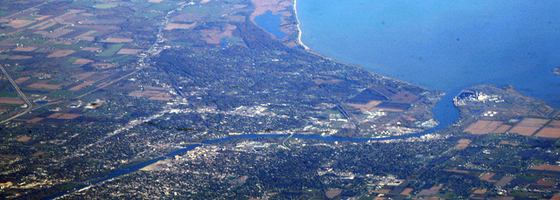USGS: Sampling methods likely underestimating Saginaw River phosphorous loads

Excess sediment and nutrients are two reasons why Michigan’s Saginaw Bay is the target of state and federal restoration efforts. But the standard methods environmental agencies use to measure and calculate the amount of sediment and phosphorous flowing into the Bay from the Saginaw River might be underestimating the loads, according to a report from the U.S. Geological Survey.
USGS scientists compared sampling and measurement techniques used on the river by environmental agencies with alternative methods. That included a more rigorous water quality sampling regime than the method used by the Michigan Department of Environmental Quality and the National Oceanic and Atmospheric Administration, which is mostly limited to surface samples.
The USGS also tested an acoustic Doppler current profiler’s discharge estimates against the standard stage-discharge method used by the agencies.
Compared with the surface sampling method, the study found that a water quality sampling method that better accounted for the depths of the river resulted in measurements showing higher levels of suspended sediment, turbidity and phosphorous. The acoustic gauge’s discharge estimates better captured the effects of Saginaw Bay’s influence on the velocity of the river than the standard gauge.
If agencies working on the Saginaw River and Bay adopted the water quality and quantity monitoring methods tested by the USGS, it would likely lead to more accurate phosphorous concentrations and load estimates, the study concludes.
Image: The Saginaw River flows into Saginaw Bay (Credit: Doc Searls, via Flickr)





0 comments